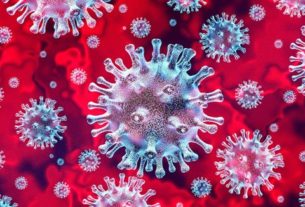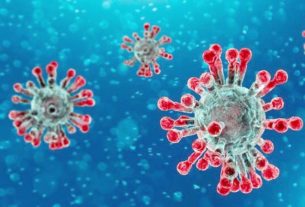From Our Bureau
25TH JUNE 2020
The Corona Virus (COVID-19) pandemic situation remained grim globally, with the confirmed cases across the world soaring to 92,96,202 and the death toll reaching 4,79,133 in the 216 affected countries and territories, according to the latest update from the World Health Organization (WHO).
Globally, American region continued to be the worst-hit with 46,04,134 confirmed cases and 2,30,165 deaths. Europe came next with 26,00,590 confirmed cases and 1,94,972 deaths. Eastern Mediterranean region reported 9,69,656 confirmed cases and 22,003 deaths.
South-East Asia region’s tally stood at 6,63,308 confirmed cases and 19,156 deaths. Western Pacific region recorded 2,09,215 confirmed cases and 7,383 deaths and African region registered 2,48,558 confirmed cases and 5,441 deaths. WHO Risk Assessment at global level remained very high.
Speaking at the 24th June media briefing on COVID-19, WHO Director-General Dr Tedros Adhanom Ghebreyesus highlighted work by WHO and UN partners to ensure global supplies of oxygen for treating patients, and discussed the difficult choices all countries must make in holding gatherings of large numbers of people.
The government of the Democratic Republic of the Congo today declared the end of the country’s 10th outbreak of Ebola virus disease. Many of the public health measures that have been successful in stopping Ebola remain essential for suppressing COVID-19. Healthcare workers trained in clinical management, and infection prevention and control, as part of the Ebola response are redeploying to fight COVID-19.
As cases of COVID-19 in the Americas remain high, WHO’s Regional Director for the Americas, Dr Carissa F. Etienne, cautioned that “We must be realistic about the future: all of us must adjust to a new way of life and redefine our sense of normal.” She reiterated “though we rejoice when one country successfully flattens its COVID-19 epidemic curve, the risk of re-emergence will always remain unless we flatten the curve regionally and globally.”
Today’s ‘Subject in Focus’
An update on the interim guidance on Critical preparedness, readiness and response actions for COVID-19
As the pandemic evolves, so do the actions required by each country as they face different transmission scenarios. On 24th June, WHO updated the interim guidance on the critical preparedness, readiness and response actions for COVID-19. This replaces the previous version, published on 22 March.
WHO has defined four transmission scenarios for COVID 19:
1. No cases: Countries/ territories/ areas with no cases;
2. Sporadic cases: Countries/ territories/ areas with one or more cases, imported or locally detected;
3. Clusters of cases: Countries/ territories/ areas experiencing cases, clustered in time, geographic location, and/or by common exposure;
4. Community transmission: Countries/ territories/areas experiencing larger outbreaks of local transmission, defined through an assessment of factors including, but not limited to: • Large numbers of cases which cannot be linked to transmission chains • Large numbers of cases from sentinel lab surveillance or increasing positive tests through sentinel samples (routine systematic testing of respiratory samples from established laboratories) • Multiple unrelated clusters in several areas of the country/territory/area.
Several countries have demonstrated that COVID-19 transmission from one person to another can be controlled. The “No cases” transmission scenario now covers both countries that have never had any COVID-19 cases and countries that previously had COVID-19 cases, but currently have no active cases.
The updated guidance document provides an overview of the key actions and links to WHO interim guidance documents according to each transmission scenario. This covers emergency response mechanisms, risk communication and community engagement, epidemiological surveillance, contact tracing, public health measures, infection prevention and control, laboratory testing, case management strategies, maintaining essential health services and societal responses. (eom)


